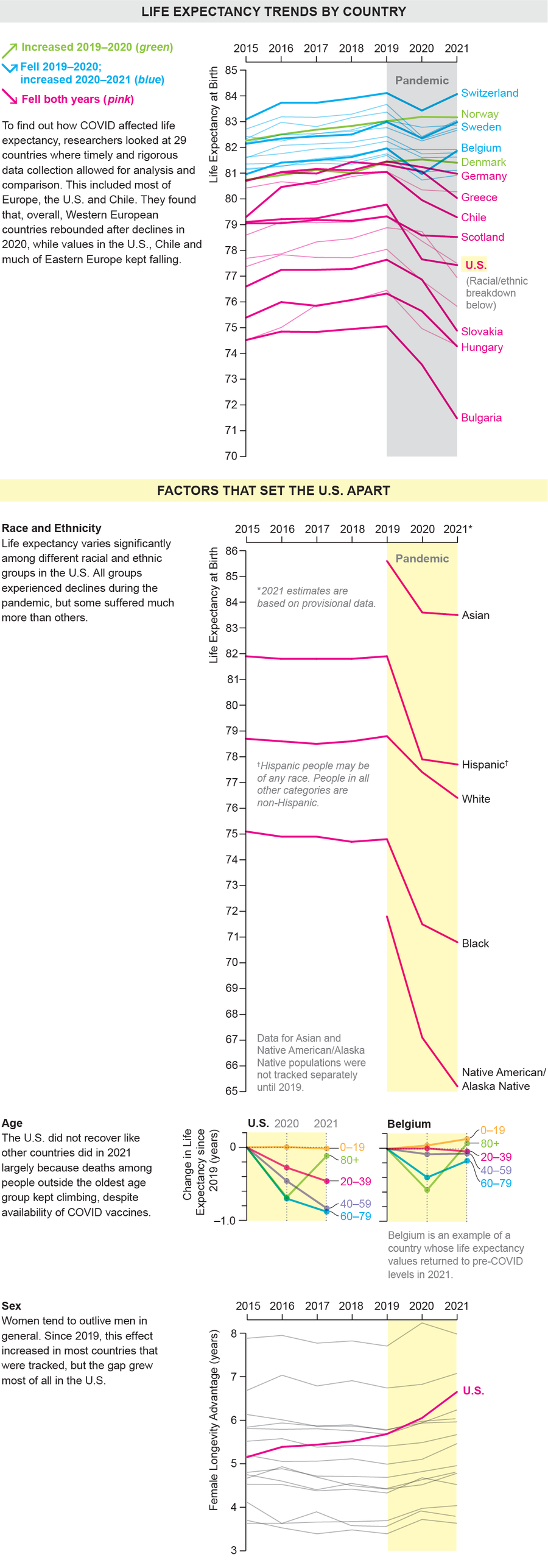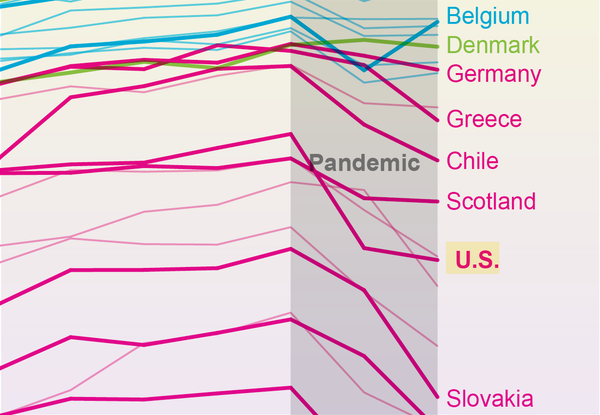On supporting science journalism
If you're enjoying this article, consider supporting our award-winning journalism by subscribing. By purchasing a subscription you are helping to ensure the future of impactful stories about the discoveries and ideas shaping our world today.
Over the past century people have been living longer lives around the globe. Then COVID hit. Now, nearly three years into the pandemic, with highly effective vaccines widely available, life expectancy in many middle- and high-income countries has started to bounce back. But in the U.S., it is still dropping. A study last year found that life expectancy in most Western European countries recovered in 2021—most likely the result of high vaccination rates that reduced mortality, particularly among the elderly. But the U.S. has continued to see declines, in part because of lower vaccination rates as well as a devastating opioid epidemic.
Despite being one of the richest countries in the world, the U.S. has seen life expectancy fall to a level not documented since 1996, according to an analysis by the Centers for Disease Control and Prevention. And the effects are not felt equally: Native Americans, Black people, Latino people, and men in general have died at disproportionately high rates during the pandemic, from both COVID and other causes.

Credit: Amanda Montañez; Sources: “Life Expectancy Changes since COVID-19,” by Jonas Schöley et al., in Nature Human Behaviour. Published online October 17, 2022 (country data); Centers for Disease Control and Prevention (race and ethnicity data)
